Hybrid Power for the Electric Carriage
At first, I thought I might take a weed-whacker motor and chain
drive a 500W DC motor/generator similar to my main drive motors but that idea
just kept getting more and more complicated. Speed reduction, complicated mounting
brackets, voltage and current control, and so on....
So I started looking for a 4-stroke motor since I really didn't
want all the hassle of mixing gas and oil. Besides, 4-strokes are quieter and
don't smoke. I found this great little Honda 25cc motor that looked perfect.
I wasn't expecting it to come with a centrifugal clutch though.

Well it was that clutch that gave me the idea of mounting a
regular car alternator directly onto the motor. A 24 volt alternator would be
even better.
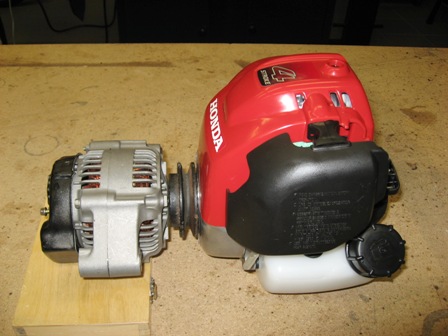
The only 24 volt alternators I could find were great big industrial
units. Way too heavy. The solution was to fit a 24 volt regulator to a standard
Toyota alternator. I'm not sure yet how well this will work. I may have to get
the rotor rewound to handle the higher voltage. I hope not though. The standard
alternators are built to supply power at fairly low idle rpm. (600 engine rpm
would be about 1200 alternator rpm on a car) The centrifugal clutch on the Honda
cuts in at 4000 rpm so the alternator would never spin slower than that.
Many thanks to Joe Falkner of Commercial Alternator and Starter
on Oshawa Ontario for all his help and advice with the alternator.
Had to do some minor machining to the alternator casting to
take the adapter plate. I used heli-coils in the aluminum for extra strength.
I also had to turn down the rotor shaft to take the clutch drum. When I tried
to thread the shaft, I got the die a little crooked and the drum wobbled like
crazy. So I cut off the crooked part, bored the shaft and ran a tap into it
using the lathe as a guide to keep it straight. I cut off the end of a 3/8"
grade 8 bolt and locktited it into the bore. That worked much better.

The adapter was machined from a 4-1/8"D x 2" bar
of aluminum.
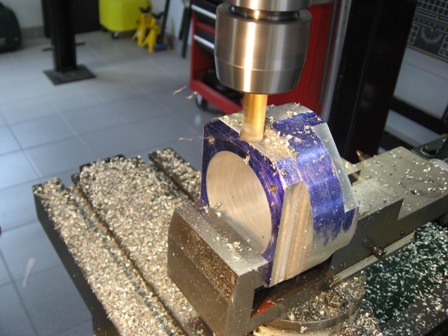
The 45 deg offset in the flanges is for clearance to get a
wrench on the the bolts.
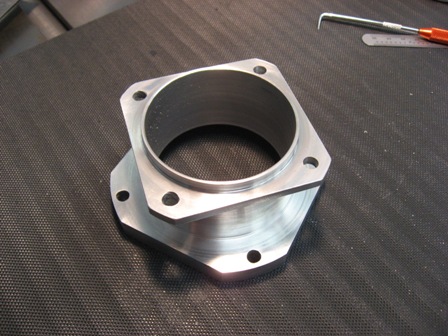
Since the alternator is mounted directly onto the motor, there
won't be any torque transferred to the mounting bracket. The bracket can be
fairly light.
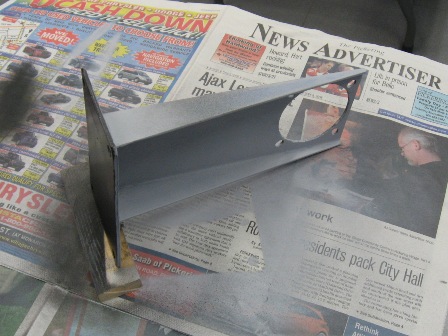
Here are all the pieces ready to assemble.
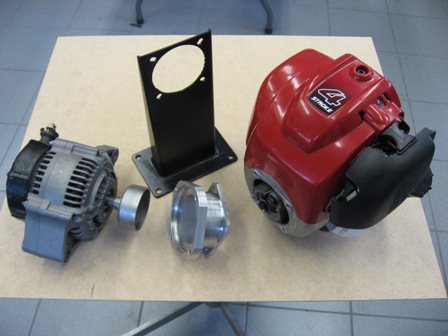
Ready to mount. The centre of gravity ended up right at the
centre of the mounting bracket.
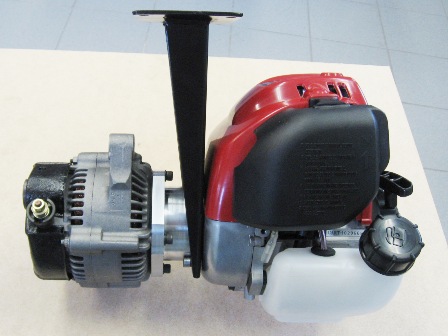
Now to start working on the electrics. I'm not sure how the
motor will react to the varying load of the alternator. It may slow the motor
down to the point that the clutch slips. I am going to try to fit a speed governor
to the motor. I think that will help.
It's now the first week of February and I AM SICK OF WINTER!








